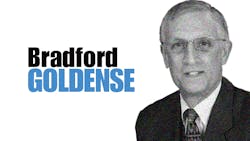Does Engineering Work for Sales or Management?
Strategy is a wonderful word. It sounds great in meetings, as does its adjective form, strategic. Everyone's mind snaps to attention the moment either is heard. Then everyone nods, saying we have got to have the right strategy. And if some plan is called strategic, then we must certainly do it.
Management and consultants throw the s-word around casually all the time. Most of the time, these folks are actually talking about tactics; or even worse, operational levels. There are certain instances in which both tactics and operational items are strategic. But, usually they are not.
Several companies and service firms do understand how to create strategies and then put them into effect. People who have worked for those companies see it immediately and their thought processes are changed for the rest of their careers.
We can easily see that Apple has a strategy for its product portfolio. Microsoft, in the old days when they just had the Office suite, also had a clear product portfolio strategy. But most companies lack a clear strategy. Can you describe your company's product portfolio strategy? Do you see that strategy enforced in decision-making meetings? For example, do certain valid product opportunities, such as needs expressed by sales and favorite pet projects, get the thumbs down to keep the portfolio on strategy? Can you see strategy being enforced? You would know it if you saw it.
Strategies, and their enforcement, are important. The only companies that don’t need them either out-service their competition, sit at the top of the heap in operational excellence and cost management, or are lucky enough to be in a high-growth industry where management can do no wrong.
Can you state Apple's strategy? How about the Microsoft's original strategy? Let's just stay with these two examples, because they are enough to make the key points. Apple is an innovator. Ever since its inception, it has reached and stretched to redefine the basis of competition. Microsoft, at its start, was also an innovator. Once Microsoft had an industry foothold with OS and Office, however, it quickly switched to a platform-derivative strategy. It continued to build out applications and extensions that ran off the same platform. Periodically, it upgraded and migrated the platform. Can you see this delineation in your company's portfolio strategy?
Only 5% of companies have the intestinal fortitude to be innovators. Innovators place big bets and are willing to accept the risk of big-time failures. Apple is fairly good at it. Typically more than half of the products fail for innovators. Most public companies avoid this strategy because it makes for jittery investors.
The platform-derivative strategy, sometimes called innovator-extender, is practiced by just about all companies as a secondary strategy. We all know of successful products that have been continuously changed and extended for years. But is it a portfolio strategy? In a portfolio strategy, the portfolio is usually described by a series of platforms and their associated families of products running off the platform. Today, about 30% of companies follow a platform-derivative strategy.
The most popular strategy is a balanced strategy, which is followed by about 45% of companies. Baseball terms are often used to describe this strategy. A company’s portfolio is said to have several homeruns, a few triples, many doubles, and a majority of singles. Each year, many singles and a few doubles get released to market because playing small ball provides consistent revenues and profits. The occasional long balls add sizzle and create great results when they happen. This strategy is the easiest to fudge, however. One obvious culprit is sales-driven engineering. In short, sales says they need it and engineering does it. The mix often looks balanced. Sales-driven engineering can be a strategy, but it is not the same as having a balanced strategy.
The final prevalent strategy is a following, sometimes called extending, and about 20% of companies use it. Like innovators, followers usually maintain focus. When an innovator, platform-derivative, or balanced company puts something new in the marketplace, the follower copies it. They offer it at a lower price, or with a couple of added features, or some other permutation on the original. And they typically offer better service or warranties. The point is, followers react to what is the first or second of its kind on the market and quickly offer an alternative. Followers also include companies that extend other companies’ products. For example, when Harley-Davidson releases a new bike, aftermarket companies create all kinds of associated equipment and accessories.
When your company puts you to work designing a new product, do you know why the product was chosen and the portfolio strategy it aligns with?
About the Author
Bradford Goldense
Contributing Technical Expert
Bradford L. Goldense is founder and president of Goldense Group, Inc. [GGI] (www.goldensegroupinc.com), a consulting, market research, and education firm focused on business and technology management strategies and practices for product creation, development, and commercialization. He has been an adjunct faculty member of the graduate engineering school at Tufts University's Gordon Institute for 19 years. Goldense is a Certified New Product Development Professional [NPDP], a Certified Manufacturing Engineer [CMfgE], a Certified Computer Professional [CCP], and is Certified In Production & Inventory Management [CPIM]. He holds over 200 registered copyrights and is a recognized subject-matter expert, including appearances on PBS and CNBC. He has consulted to over 250 companies and over 750 manufacturing locations on four continents since founding GGI in 1986. Goldense holds an MBA in Accounting from the Cornell Johnson School and a BSCE from Brown University. For more information, please see Brad's LinkedIn profile or visit GGI's home page.

